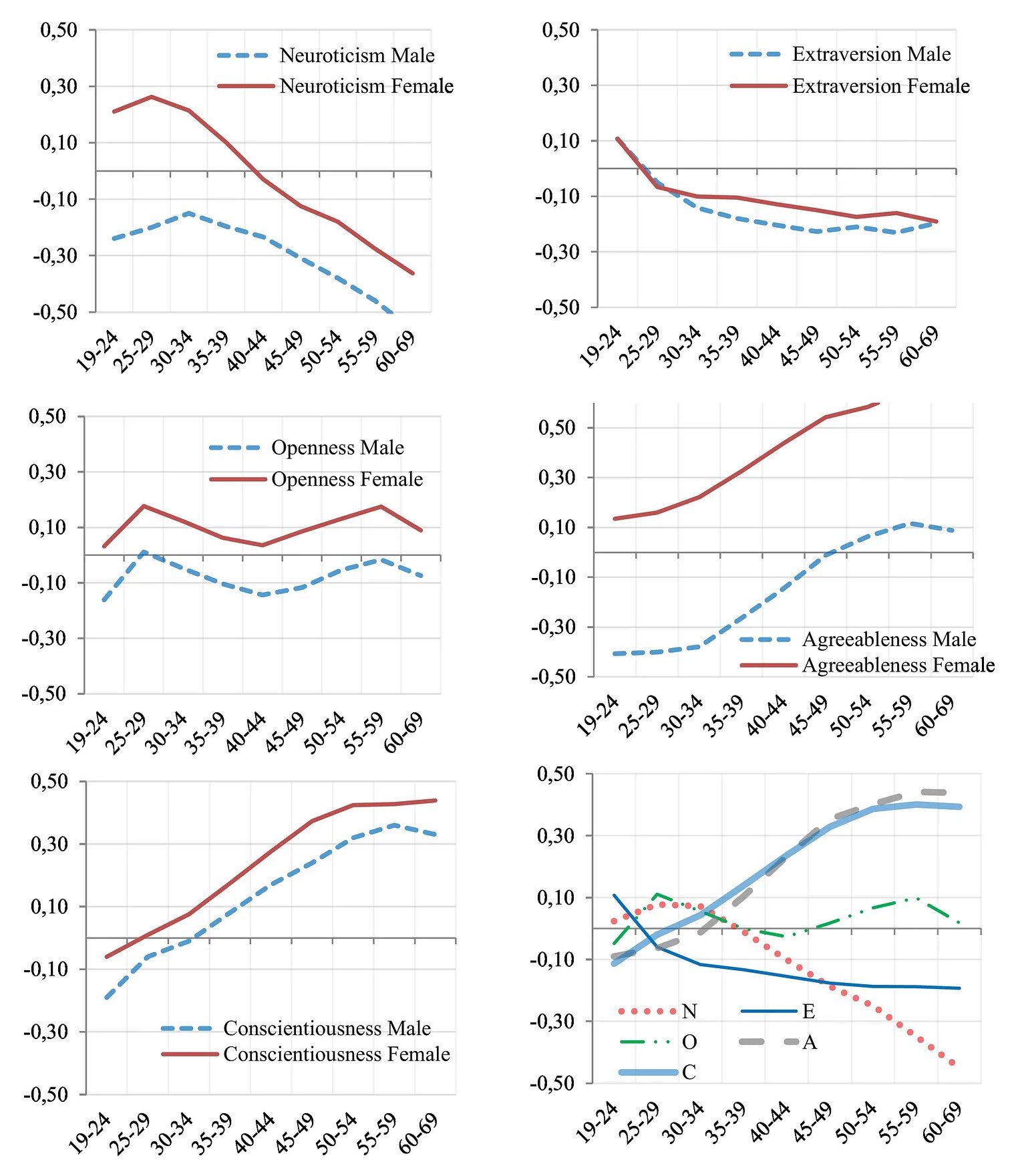Big Five personality traits

The Big Five personality traits is a suggested taxonomy, or grouping, for personality traits, developed from the 1980s onward in psychological trait theory.
Starting in the 1990s, the theory identified five factors, typically referred to as:
- openness to experience (inventive/curious vs. consistent/cautious)
- conscientiousness (efficient/organized vs. extravagant/careless)
- extraversion (outgoing/energetic vs. solitary/reserved)
- agreeableness (friendly/compassionate vs. critical/rational)
- neuroticism (sensitive/nervous vs. resilient/confident)
Some cross-cultural research has shown some patterns of gender differences on responses to the NEO-PI-R and the Big Five Inventory. For example, women consistently report higher Neuroticism, Agreeableness, warmth (an extraversion facet) and openness to feelings, and men often report higher assertiveness (a facet of extraversion) and openness to ideas as assessed by the NEO-PI-R.[3][4]
A study of gender differences in 55 nations using the Big Five Inventory found that women tended to be somewhat higher than men in neuroticism, extraversion, agreeableness, and conscientiousness. The difference in neuroticism was the most prominent and consistent, with significant differences found in 49 of the 55 nations surveyed.[5]
Gender differences in personality traits are largest in prosperous, healthy, and more gender-egalitarian nations. The explanation for this given by the researchers of a 2001 paper is that acts by women in individualistic, egalitarian countries are more likely to be attributed to their personality, rather than being attributed to ascribed gender roles within collectivist, traditional countries.
Measured differences in the magnitude of sex differences between more or less developed world regions were caused by the changes in the measured personalities of men, not women, in these respective regions. That is, men in highly developed world regions were less neurotic, less extraverted, less conscientious and less agreeable compared to men in less developed world regions. Women, on the other hand tended not to differ in personality traits across regions.[6]
The authors of this 2008 study speculated that resource-poor environments (that is, countries with low levels of development) may inhibit the development of gender differences, whereas resource-rich environments facilitate them. This may be because males require more resources than females in order to reach their full personality potential of less conscientious, less agreeable, less neurotic, and less extraverted. The authors also speculated in their discussion that due to different evolutionary pressures, men may have evolved to be more risk taking and socially dominant, whereas women evolved to be more cautious and nurturing. The authors further posited that ancient hunter-gatherer societies may have been more egalitarian than later agriculturally oriented societies. Hence, the development of gender inequalities may have acted to constrain the development of gender differences in personality that originally evolved in hunter-gatherer societies. As modern societies have become more egalitarian, again, it may be that innate sex differences are no longer constrained and hence manifest more fully than in less-wealthy cultures.[7]
Wikipedia
This article contains information imported from the English Wikipedia. In most cases the page history will have details. If you need information on the importation and have difficulty obtaining it please contact the site administrators.
Wikipedia shows a strong woke bias. Text copied over from Wikipedia can be corrected and improved.
References
- ↑ https://www.stevestewartwilliams.com/p/sex-differences-in-personality
- ↑ https://archive.is/ld68I
- ↑ https://www.science.org/doi/10.1126/science.aas9899
- ↑ https://archive.ph/pKX68
- ↑ https://archive.org/details/sim_journal-of-personality-and-social-psychology_2008-01_94_1/page/168
- ↑ https://archive.org/details/sim_journal-of-personality-and-social-psychology_2008-01_94_1/page/168
- ↑ https://archive.org/details/sim_journal-of-personality-and-social-psychology_2008-01_94_1/page/168